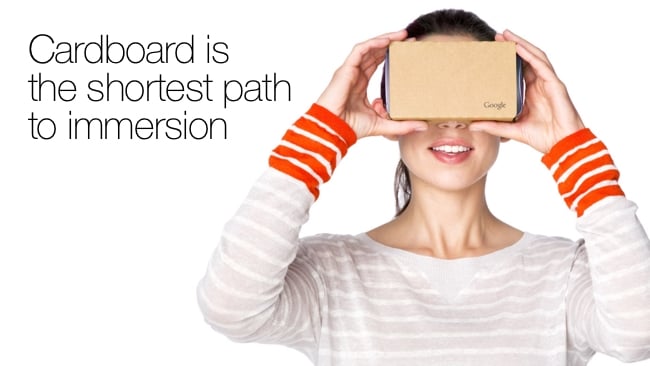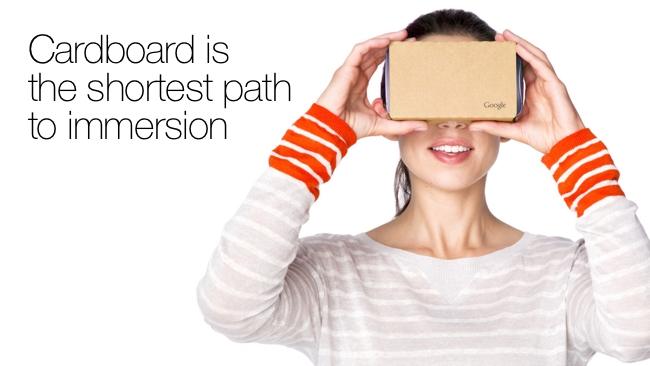
 VR graphic by www.shutterstock.com
VR graphic by www.shutterstock.com
Our Editor-in-Chief strapped a phone into an inexpensive Cardboard VR viewer
I recently tried out Google's utilitarian (but actually rather good) Cardboard VR visor. If you haven't tried this yet, it's a clever and very cheap way to use your smartphone as a VR viewer. The "Cardboard" part of it is a folded mount for the phone that also houses two 45mm focal point lenses, one for each eye.
Google-provided software running on the phone splits the display into two areas, one for each eye. It also corrects for the intrinsic barrel distortion in the simple lenses.
When you hold the device up to your eyes, you see a display that floats in front of your face. As you move your head, the scene changes proportionately. It works side-to-side and vertically. It even works if you tilt your head.
Social VR with Avakin
I tried the system with Lockwood Publishing's Avakin (in a special VR test mode). This is a multi-user virtual world populated by avatars that are created by the users. The avatars exist in a shared space and, as you look around, you can see other people's avatars, who can see the same scenery, objects and avatars as you can.
Avatars can communicate with each other through text messages. You can purchase clothes and other artefacts to wear, live in and to play with.
Avakin has some lush environments, with a string bias towards sun, sand and sea.
Cardboard quality?
How did it look in Google Cardboard? Actually pretty good. If you ever wondered whether you'd benefit from an 8K resolution display in a smartphone, here's your reason. Effectively, you're dividing the phone's resolution in two (because you need half of the screen for each eye) and then each side has to fill almost your entire field of vision.
It does this admirably, but there are limitations. You can see the individual pixels and quite pronounced aliasing along diagonals.
But despite this, the resulting experience is perfectly acceptable. As you move your head, the images track responsively (remarkably so, when you consider that a smartphone is not a specialist VR device. It just goes to show how good the internal positional sensors in smartphones actually are these days.)
It does get a bit jerky. Sometimes when you move, the motion isn't entirely smooth. I don't know whether this is a limitation of the phone's sensors or an inability to generate the scene quickly enough.
Being there (on the cheap)
But the point is that it is close enough and good enough to be enjoyable. You definitely get that cinematic transfer of reality so that you believe you are there. Some scenes work better than others. One of the best for me was when I was inside a beach shelter, with four posts holding up a palm-leaf roof. You could see the floor and the ceiling. And you could see the beach, the sea and the seagulls flying too. There was a real sense of being there and you wanted to pivot your head as far as possible to see what was actually out there.
This experience will only get better. Google Cardboard is a fascinating anomaly in that it is a very low cost means to use all the power in your smartphone to make a VR visor. Other devices are available, but the remarkable thing about Cardboard is that it is a way to enjoy VR untethered. There are no wires. This is a good thing.
Is it all worthwhile? It's not cinematic quality, but this fact alone demonstrates that the VR illusion is not entirely dependent on resolution. There is undoubtedly a lot of room for improvement, but this works with what is here and available now. All you need is a reasonably powerful smartphone and, er, some cardboard.
Graphic by Shutterstock
Tags: VR & AR


Comments